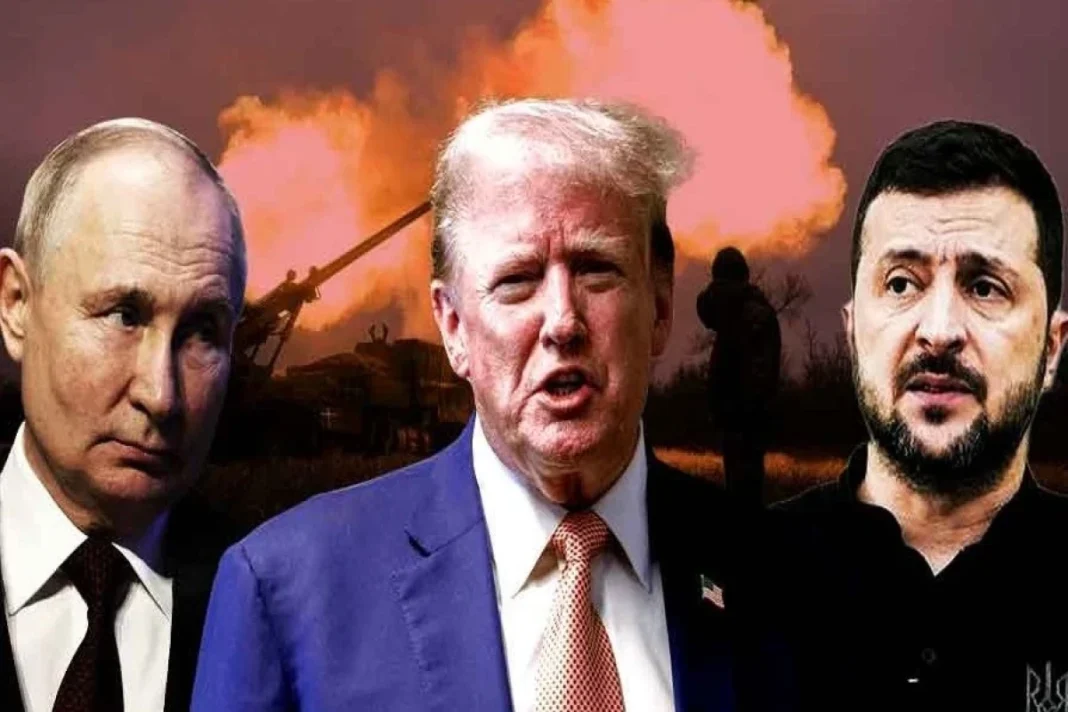By Vesti.Az
July 16, 2025
In a striking piece for The Washington Post, veteran columnist David Ignatius likened Donald Trump’s newfound ambitions for the Nobel Peace Prize to Alfred Nobel himself—an inventor whose legacy of peace was funded by the profits of dynamite. The metaphor, chilling in its aptness, underscores a global order where brute force increasingly masquerades as diplomacy.
Ignatius, known for his close ties to U.S. security and diplomatic circles, outlines three key motivations behind Trump’s recent pivot to “escalation for the sake of de-escalation.”
First: personal grievance. Trump reportedly believes that Vladimir Putin has repeatedly disrespected him, feigning interest in peace while launching missile strikes on civilian targets—retirement homes, maternity wards, residential blocks—within hours of speaking with him. “I thought we had a deal four times,” Trump was quoted saying, “and then I get home and find out they’ve bombed a nursing home.”
Second: confidence in American military superiority. Trump saw the successful deployment of B-2 bombers and Tomahawk missiles in Iran as proof that shows of force can yield diplomatic results.
Third: the belief that Putin only responds to pressure backed by real military threat—not sanctions.
And Trump may be right on that last point. Sanctions, after all, have become increasingly porous. Russia has grown adept at circumventing them, and with U.S.-Russia trade volumes under $4 billion annually, financial pressure is limited. Sanctions targeting Russian oil exports could hurt China and India more than Moscow—a geopolitical gamble Trump may be reluctant to make.
Instead, Putin has long been fixated on one thing: Western arms deliveries to Ukraine. Confident that Trump, a vocal critic of Ukrainian President Volodymyr Zelensky, would block further aid, the Kremlin interpreted the 2023 Republican blockade in Congress as a green light. The resulting delay in military and financial assistance crippled Ukraine’s counteroffensive and emboldened Russian forces.
Even after taking office in January 2025, Trump twice suspended Biden-era assistance to Ukraine and repeatedly declared the war “not America’s fight.” He floated ideas aligned with Moscow’s terms—recognition of Crimea as Russian, a ceasefire along current front lines, and early elections in Ukraine based on Putin’s claims that Zelensky lacked legitimacy.
Zelensky’s pleas for U.S. weapons reportedly fell on deaf ears. Trump’s “America First” rhetoric allowed him to ignore the strategic collapse of U.S. influence in Eastern Europe and the human toll on Ukrainian civilians.
Then came July. After six months of deadlock—and, perhaps more importantly, personal humiliation—Trump abruptly reversed course. Standing beside NATO Secretary General Mark Rutte, he announced U.S. support for Ukraine, albeit indirectly: the weapons would be American, the money European, and the delivery mechanism NATO. The political optics were carefully curated—Trump could claim to protect U.S. taxpayers while asserting leadership.
Pressure from Europe likely played a role. German Chancellor Friedrich Merz and Republican ally Lindsey Graham pushed the case for Ukraine. Polls also showed rising Republican voter support for military aid—Trump, ever attuned to his base, adjusted accordingly.
Still, the method raised questions. Why the convoluted NATO delivery mechanism? Who is Trump trying to fool—Putin, the public, or himself? Moscow has already responded. Russian state media is launching fresh broadsides against the U.S., calling the shift a betrayal and proof of American duplicity.
Meanwhile, reports surfaced that Trump privately asked Zelensky whether Ukraine could strike Moscow and St. Petersburg. According to The Financial Times, Zelensky replied: “Absolutely—if you give us the weapons.”
Which leaves the world in a familiar state of tension, one foot in escalation, the other in diplomatic ambiguity. Trump’s “half-escalation” has yet to include long-range missile deliveries or permission for Ukraine to retaliate deep into Russian territory. Putin, undeterred, continues pounding Ukrainian cities.
Trump’s strategy—to outsource costs, avoid direct confrontation, and use pressure to broker peace—resembles his Iran playbook. But will it hold? Or will he fold halfway, as he did with China’s trade war? His silence on whether he’d respond militarily if Putin escalates speaks volumes.
More fundamentally, global analysts are asking: Why not hit Russia where it hurts most—its digital infrastructure? Why haven’t cyber powers moved to disable Russian communications, missile guidance systems, or nuclear command and control? If nuclear blackmail is Putin’s last card, why isn’t the West using its technological edge to remove it from the table?
For now, the world watches a high-stakes gamble unfold—one where the self-styled peacemaker holds the dynamite, but no one knows whether he plans to defuse it or light the fuse.




